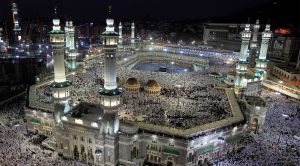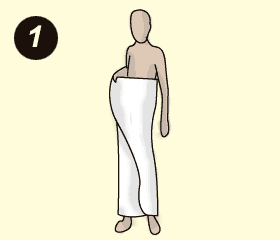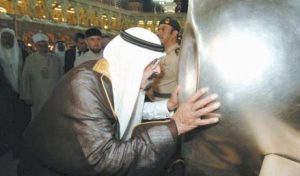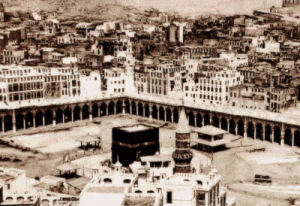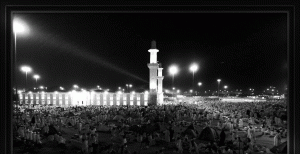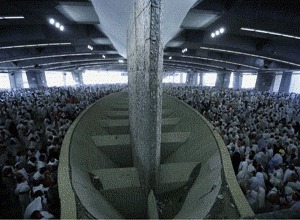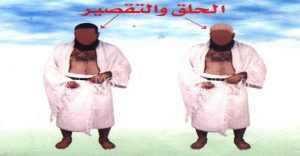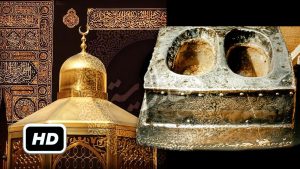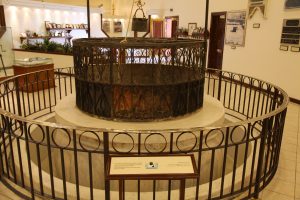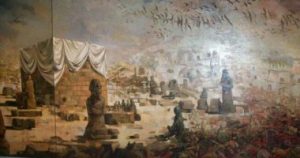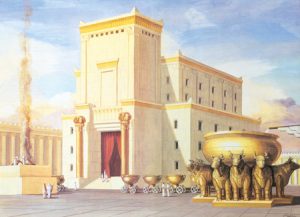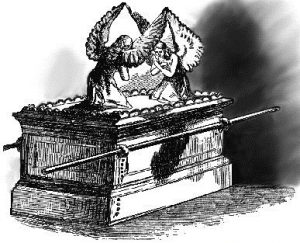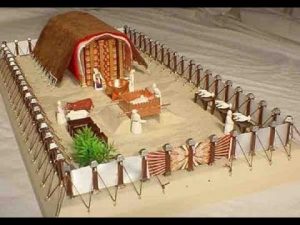At the beginning of the sacred month of Dhu Al-Hijjah according to the Islamic (Hijri) lunar calendar, the world is wakened to a touching scene of vast masses of Muslims putting on white sheets at Mecca.
This is the Islamic major pilgrimage (Hajj) which is seen by many people as unpopular with the Abrahamic religions. That is why there is ample room for misunderstanding, vilification, contestation and even attribution to paganism.
Many questions are asked by non-Muslims about the aspect of worship in this ceremony which seems unconventional for the followers of the previous heavenly messages preceding the final message of Islam brought forward by Prophet Muhammad.
Hajj is an act of worship involving much more symbolism than the other acts of worship in Islam. it is performed in response to Abraham’s call
However, as the proverb goes: “if the reason is known, the surprise is blown!” Let’s know more about this controversial ceremony to identify its spiritual meanings and track its origins and decide if they are heavenly or pagan ones.
Symbolism in Hajj (Pilgrimage)
The aspect of worship in the Islamic acts of worship is not equally clear and direct. It rather differs from one act of worship to another. The aspect of worship is very clear and direct in some acts of worship like prayer. It is contact, connection and communication between man and God where the former disconnects oneself from the universe and privately connects oneself with God alone, apart from all worldly concerns and worries which may interfere with such spiritual communication.
The aspect of worship is less clear and direct in other acts of worship like fasting. It is an act of worship which is passive rather than active. A believer gives up one’s desires to become closer to God by being more willing to do other acts of worship for seeking the pleasure of God.
The aspect of worship is even much less clear and direct in other acts of worship like almsgiving. It is an act of worship involving property purification of the potentially illegal or suspicious gain and giving it up to others, especially the needy, in the different forms of benefaction and philanthropy. While God does not receive alms or charity, a believer draws close to God by purifying one’s property of the potentially illegal gains and even giving up a part of one’s legitimate property to charity.
The aspect of worship in major/minor pilgrimage (hajj / `Umrah) may be the least clear and direct among all Islamic acts of worship. It involves much symbolism like stripping off sewn clothes, going to the Holy House of God in Mecca, circumambulation round, touching the corners and holding the curtains of the Ka`bah, kissing the Black Stone, jogging between Al-Safa and Al-Marwa mounts, stopping at Arafah, slaughtering sacrifices, throwing pebbles and shaving or cutting hair. All of those are rites involving symbolism and spirituality as follows:
Stripping off Sewn Clothes
If a Muslim man intends to make major/minor pilgrimage (hajj / `Umrah), he has to get into the state of self-denial (Ihram) by denying himself any gratification of his usual desires, mainly his sexual desire. So, a Muslim man, unlike woman, takes off his worldly, fancy clothes, then takes a bath and wraps himself in the sheets with which he will go to meet his Maker, in the first place, at the grave. They are two sheets of cloth, one covering the upper part of the body, whereas the other covers the lower part. No clothes may be worn under or over such sheets. In the Qur’an, God says:
Hajj is [during] well-known months, so whoever has made Hajj obligatory upon himself therein [by entering the state of Ihram], there is [to be for him] no sexual relations and no disobedience and no disputing during Hajj. And whatever good you do – God knows it. And take provisions, but indeed, the best provision is fear of God. And fear Me, O you of understanding. (Al-Baqarah 2:197)
The purpose of putting on the Ihram sheets is having otherworldly feelings by taking off the worldly clothes and keeping away from all worldly distractions and temptations. The Muslim making major/minor pilgrimage (hajj / `Umrah) seems as if he was wearing his shroud. Abu Hurairah reported that Prophet Muhammad said: “Remember the destroyer of pleasures (meaning death)” (At-Tirmidhi & An-Nasa’i)
Circumambulation Round the Ka`bah
Muslims do not worship the Ka`bah. They just turn towards in prayer and circumambulate it in major/minor pilgrimage (hajj / `Umrah). They worship God by turning to or circumambulating the Ka`bah, like the angels. Just as God has a house in heaven that angels circumambulate, called “Al-Bayt Al-Ma`mur”, He also has an equivalent house on earth which people circumambulate. At-Tabary reports that Qatadah said: “The Messenger of God said: ‘Al-Bayt Al-Ma`mur is a mosque in heaven above the Ka`bah. If it falls, it will fall on it. Seventy thousand angels enter it every day. When they get out of it, they do not come back.’” (a hadith ranked “authentic” by Al-Albany)
Kissing the Black Stone
As indicated above, Muslims do not worship the Ka`bah or the Black Stone. Also, when they touch the corners or hold the curtains of the Ka`bah, they do not worship the Ka`bah but God.
The Prophet and his Companions themselves did that though they firmly believed in God and that the Ka`bah including its contents including the Black Stone are such inanimate objects which neither bring benefit nor cause harm.
`Umar narrated that he kissed the Black Stone and said, “I know that you are a stone and can neither benefit anyone nor harm anyone. Had I not seen the Messenger of God kissing you, I would not have kissed you.” (Bukhari & Muslim)
The purpose of kissing the Black Stone is supplication to God for the forgiveness of sins. Ibn `Umar reported that the Messenger of God turned to face the Stone, then he put his lips on it and wept for a long time. Then he turned and saw `Umar bin Khattab weeping. He said: ‘O `Umar, this is the place where tears should be shed.’” (Ibn Majah)
Several hadiths are reported on the authority of Prophet Muhammad, indicating that the Black Stone was sent down from Heaven. That is why it is seen as a means of showing subservience before God for the forgiveness of sins.
Ibn Abbas reported that the Messenger of God said, “The Black Stone descended from Paradise and it was whiter than milk, but it has become black due to the sins of the children of Adam.” (At-Tirmidhi & Ahmad)
Ibn Abbas reported that the Messenger of God said about the (Black) Stone: “By God! God will raise it on the Day of Resurrection with two eyes by which it will see and a tongue that it will speak with, testifying for whoever touched it in truth.” (At-Tirmidhi & Ibn Majah)
Jogging between Al-Safa and Al-Marwa mounts
In major/minor pilgrimage (hajj / `Umrah), Muslims jog between Al-Safa and Al-Marwa mounts in commemoration of Lady Hagar, Prophet Abraham’s wife and Prophet Ismael’s mother, and her absolute confidence in and total reliance on God. After she had submitted to God’s will, she used up all worldly ways and means. She kept jogging between Al-Safa and Al-Marwa mounts for seven times in quest of water until God blessed her and her baby with water.
About Lady Hagar and jogging between Al-Safa and Al-Marwa mounts for seven times, we read the following in Ibn `Abbas’ long hadith recorded by Al-Bukhari:
“…and found that the mountain of Safa was the nearest mountain to her on that land. She stood on it and started looking at the valley keenly so that she might see somebody, but she could not see anybody. Then she descended from Safa and when she reached the valley, she tucked up her robe and ran in the valley like a person in distress and trouble, till she crossed the valley and reached the Marwa mountain where she stood and started looking, expecting to see somebody, but she could not see anybody. She repeated that (running between Safa and Marwa) seven times.” The Prophet said, “That is why people jog between them (i.e. Safa and Marwa)…” (Al-Bukhari)
The Inviolable House of God (Holy Sanctuary)
God does not literally have a house to live therein. Neither the Ka`bah nor the holy mosque in Mecca is a literal house of God. It is just a holy sanctuary where people go to worship God. God is the Lord rather than occupier of the House. In the Qur’an, God says:
Therefore, let them worship the Lord of this House; Who fed them against hunger, and secured them against fear. (Quraish 106:3-4)
The House of God is occupied by the Servants of God who spend the night standing and prostrating themselves before God. In the Qur’an, God says:
And the servants of (God) Most Gracious are those who walk on the earth in humility, and when the ignorant address them, they say, “Peace!”; Those who spend the night in adoration of their Lord prostrate and standing (Al-Furqan 25:63-64)
The House of God was built for those servants to spend the night in prayer, seclusion, bowing down and prostration. In the Qur’an, God says:
And [mention] when We made the House a place of return for the people and [a place of] security. And take, [O believers], from the standing place of Abraham a place of prayer. And We charged Abraham and Ishmael, [saying], “Purify My House for those who perform Tawaf and those who are staying [there] for worship and those who bow and prostrate [in prayer].” (Al-Baqarah 2:125)
Also, the House of God was built for major/minor pilgrimage (hajj / `Umrah). In the Qur’an, God says:
God has made the Ka`bah, the Sacred House, standing for the people and [has sanctified] the sacred months and the sacrificial animals and the garlands [by which they are identified]. That is so you may know that God knows what is in the heavens and what is in the earth and that God is Knowing of all things. (Al-Ma’idah 5:97)
Stopping at Arafah
Stopping at Arafah is the greatest pillar of Hajj. Prophet Muhammad said: “Hajj is (stopping at) Arafah” (Imam Ahmad & Abu Dawud)
A pilgrim stops at Arafah to worship and make remembrance of God at Arafah on the 9th of Dhu Al-Hijjah. Stopping at Arafah symbolizes turning to God in repentance and supplication to His grandeur in hope of His mercy, pleasure and forgiveness despite the high temperature at the peak hours of the day at Arafah.
Stopping at Arafah may be the most strenuous rite of hajj for a pilgrim usually stays at Arafah throughout the 9th of Dhu Al-Hijjah. That is why stopping at Arafah has so great merit that it is considered the greatest pillar of hajj. Maybe, Arafah is given this named for people stay there and so they know one another (yat`arafun).
Spending the Night at Muzdalifah (Al-Mash`ar Al-Haram)
After leaving Arafah, a pilgrim goes to Muzdalifah (Al-Mash`ar Al-Haram) for taking a rest. A pilgrim makes remembrance of God over there at night, before going to Mena for throwing pebbles and stoning the Devil. In the Qur’an, God says:
But when you depart from `Arafat, remember God at Al-Mash’ar Al-Haram. And remember Him, as He has guided you, for indeed, you were before that among those astray. (Al-Baqarah 2:198)
So, spending the night at Muzdalifah is intended for taking a rest at the end of the strenuous day of Arafah, making remembrance of God, and making ready for throwing pebbles at Mena as Muzdalifah is situated between Arafah and Mena.
Throwing Pebbles
On the morning of the Feast of Sacrifice, corresponding to the 10th of Dhu Al-Hijjah, a pilgrim goes to Mena for throwing pebbles and stoning the Devil. On the feast day, a pilgrim throws Jamrat Al-`Aqabah Al-Kubra, i.e. 7 small bean-shaped pebbles at a symbol representing the Devil. On each of the next three (Al-Tashriq) days, a pilgrim throws 21 pebbles at three symbols of the Devil at three adjacent spots.
Thus, a hasty pilgrim (who spends only two days after the feast day at Mena) throws 49 pebbles. Yet, the tardy pilgrim (who spends three days after the feast day at Mena) throws 70 pebbles.
The purpose of throwing pebbles is following in the footsteps of Prophet Abraham when he stoned the Devil at those spots. Ibn `Abbas reported that Prophet Muhammad said: “When Abraham, God’s intimate, came to perform the rites of hajj, the Devil appeared to him at Jamrat Al-`Aqabah spot. So, he threw seven pebbles at him until he was immersed into the earth. Then, he appeared to him at the second Jamrah spot. So, he threw seven pebbles at him until he was immersed into the earth. Then, he appeared to him at the third Jamrah spot. So, he threw seven pebbles at him until he was immersed in the earth.” Ibn `Abbas said: “You stone the Devil and follow your father’s faith.” (Al-Mustadrak)
Slaughtering Sacrifices
Sacrifices have to be slaughtered by many pilgrims like Al-Muqrin (the pilgrim who makes hajj and `Umrah at the same time) and Al-Mutamatti (the pilgrim who makes `Umrah first, then gets out of the Ihram state and enjoys (Yatamatta) lawful things and then gets back into the Ihram state).
Other pilgrims have to slaughter sacrifices to compensate for omissions, mistakes and shortcomings in the rites of hajj. In the Qur’an, God says:
And complete the Hajj and `Umrah for God. But if you are prevented, then [offer] what can be obtained with ease of sacrificial animals. And do not shave your heads until the sacrificial animal has reached its place of slaughter. And whoever among you is ill or has an ailment of the head [making shaving necessary must offer] a ransom of fasting [three days] or charity or sacrifice. And when you are secure, then whoever performs `Umrah [during the Hajj months] followed by Hajj [offers] what can be obtained with ease of sacrificial animals. And whoever cannot find [or afford such an animal] – then a fast of three days during Hajj and of seven when you have returned [home]. Those are ten complete [days]. This is for those whose family is not in the area of al-Masjid al-Haram. And fear God and know that God is severe in penalty. (Al-Baqarah 2:196)
Sacrifices are also slaughtered in commemoration of Abraham and Ismael. God ransomed Ismael with a great sacrifice when he proceeded to slaughter his son just as he saw in a dream in response to God’s decrees for prophets’ dreams communicate something right and true commanded by God. In the Qur’an, God says:
And when he reached with him [the age of] exertion, he said, “O my son, indeed I have seen in a dream that I [must] sacrifice you, so see what you think.” He said, “O my father, do as you are commanded. You will find me, if God wills, of the steadfast.” And when they had both submitted and he put him down upon his forehead, We called to him, “O Abraham, You have fulfilled the vision.” Indeed, We thus reward the doers of good. Indeed, this was the clear trial. And We ransomed him with a great sacrifice, (As-Saffat 37:102-107)
Shaving or Cutting Hair
After a pilgrim finishes major/minor pilgrimage (hajj / `Umrah), he shaves or cuts his hair, which is called “Tahallul” (end of self-denial), symbolizing rebirth after purification of sins towards the end of hajj. Abu Hurairah reported: “I heard the Messenger of God saying, “Whoever performs Hajj (pilgrimage) and does not have sexual relations (with his wife), commits sins, or dispute unjustly (during Hajj), then he returns from Hajj as pure and free from sins as on the day on which his mother gave birth to him.” (Al-Bukhari and Muslim)
Why do Muslims Reject Symbolism in Christianity Though Hajj Involves Symbolism?
There is no denying that most Islamic acts of worship and ceremonies involve symbolism. In Islam, an act of worship is scarcely devoid of symbolism. For example, the pronunciation of the testimony of faith involves symbolism as a new Muslim takes a bath and pronounces this testimony as a proclamation of the renunciation of non-Islamic abominations and aberrations and a proclamation of a new pure, immaculate life under the shade of monotheism and obedience to God. Yet, a new Muslim may be clean and has already taken a bath and does not need to take a bath once again.
Prayer involves several symbolic acts like the ritual ablution / dry ablution, wiping socks and the like, turning towards the Qiblah (Ka`bah direction) and lining up for the congregational prayer, etc.
Neither the ritual ablution, nor the dry ablution, nor wiping socks and the like totally cleans the body. As for turning towards the Qiblah, this is a symbolic act symbolizing the unification of the worship of God by performing it in only one direction by all Muslims everywhere in the world. Lining up for the congregational prayer is also a symbolic act symbolizing the unity and unification of Muslims for the obedience to God.
Almsgiving also involves symbolism. Lady `A’ishah used to perfume the dirhams she would give up as an act of charity. When she was asked about that, she made clear that she liked that her dirhams should have been perfumed for they would fall in God’s hand before the beggar’s. A dirham would not literally fall in God’s hand. This is rather a symbolic expression.
Fasting also involves symbolism. According to several hadiths (prophetic statements) of Prophet Muhammad, the fasting Muslim’s mouth smells better than musk. Literally speaking, the fasting Muslim’s mouth does not smell well. The abovementioned hadiths are just symbolic ones.
Notwithstanding the foregoing, symbolism is strictly well-defined in Islam. No symbolism is recognized under Islam unless conclusive evidence from the Qur’an and/or the Sunnah proves it.
In Islam, we do not find ancient books and writings being collected and interpreted fancifully and symbolically like the Old Testament in the Bible. Likewise, we do not find the Qur’an and the Sunnah being interpreted fancifully and symbolically like the New Testament in the Bible. In Islam, there is no room for such symbols which are not well-evidenced especially in terms of creed or practice.
In particular, Muslims do not ascribe a son or an incarnate to God based on fancy or symbolism. They do not offer prayers, give alms or observe fasting fancifully or symbolically. Islam as both a creed or practice is always pending authentic evidence. Even well-evidenced symbols cannot extend unto irrelevant creeds or practices. They just apply to the subject matter of evidence. A symbolic law has nothing to do with Islam unlike the case in the contemporary Christianity.
Is Hajj a Pagan, Idolatrous Ceremony?
The true religion of God preceded paganism and idolatry, not vice versa. That is to say, people had followed the religion of God and then paganism and idolatry existed later on. Adam and Eve were faithful monotheists rather than pagans or idolaters. But, monotheism was affected by paganism and idolatry subsequently.
Then, heavenly messages succeeded one another from Noah’s message to Muhammad’s message as purification for the true religion of God of the aberrations of paganism and idolatry. Whenever paganism and idolatry derailed the true religion of God on earth, a prophet would be sent to make the necessary corrections and purify the religion of God of paganism and idolatry.
Hajj specifically is an act of worship which God legislated for Prophet Abraham and other prophets after him. In the Qur’an, God says:
And (remember) when We prepared for Abraham the place of the (holy) House, saying: Ascribe thou no thing as partner unto Me, and purify My House for those who make the round (thereof) and those who stand and those who bow and make prostration. And proclaim unto mankind the Pilgrimage. They will come unto thee on foot and on every lean camel; they will come from every deep ravine. (Al-Hajj 22:26-27)
Commenting on the last verse, Ibn Kathir remarked: “That is to say, ‘O Abraham, call people to hajj to the house which we commanded you to build.’ He purportedly replied: ‘O Lord, how can I call people though my voice will not be heard by them?’ God said: ‘Just call and we will make your voice heard.’ Thereupon, Abraham got up…and called: ‘O people, your Lord made a house for you to make pilgrimage.’ It is purported that mountains got down so much that Abraham’s voice echoed all over the earth, and prospective children at women’s wombs and men’s backbones were caused to hear. Everything, including stones, adobes and trees, heard him. The people whom God destined to make pilgrimage until the Judgment Day repeated: ‘Labbayka Al-Lahumma Labbayk! (here we are, Lord, at your service!)’ This is reported on the authority of Ibn `Abbas, Mojahed, `Ekrimah, Said, Ibn Jubayr etc.”
Accordingly, the Inviolable House of God in Mecca is the first house of God to be built for worship and pilgrimage. In the Qur’an, God says:
Indeed, the first House [of worship] established for mankind was that at Bakkah – blessed and guidance for the worlds. (Aal `Imran 3:96)
Abu Dharr reported: “I asked the Messenger of God: ‘Which mosque was built first?’ He said: ‘Al-Masjid Al-Haram (in Mecca).’ I said: ‘Then which?’ He said: Al-Masjid Al-Aqsa.’ (in Jerusalem)…” (Al-Bukhari)
However, as usual, when a long time passed after the times of Abraham, paganism and idolatry gradually sneaked into the religion of God, which was spoilt as a result. Thus, hajj, inter alia, was transformed from a divine act of worship into a pagan, idolatrous ceremony. For example, the Meccan polytheists made and worshipped idols at the Inviolable House of God. Some polytheists even used to circumambulate the Ka`bah while being naked.
Therefore, Prophet Muhammad came to erase the innovated aspects of paganism and idolatry and revive the monotheistic Abrahamic faith. Prophet Muhammad said: “The most beloved religion by God is the tolerant monotheism.” (Al-Bukhari)
When Prophet Muhammad conquered Mecca, he entered the Inviolable House of God and smashed the idols and images. `Abdullah ibn Mas`ud reported: “the Messenger of God entered Mecca (in the Year of the Conquest) and there were three hundred and sixty idols around the Ka`bah. He then kept hitting them with a stick in his hand and saying: ‘Truth (i.e. Islam) has come and falsehood (disbelief) vanished. Truly, falsehood (disbelief) is ever bound to vanish.’ (Al-Israa’ 17:81) ‘Truth has come and falsehood (Iblis) cannot create anything.’ (Saba’ 34:49)” (Al-Bukhari)
In the tenth year A.H. (After Hejira), God and Prophet Muhammad disassociated themselves from the last idolatrous blemishes at the Inviolable House of God and the sacred places as a whole. In the Qur’an, God says:
And [it is] an announcement from God and His Messenger to the people on the day of the greater pilgrimage that God is disassociated from the disbelievers, and [so is] His Messenger. So if you repent, that is best for you; but if you turn away – then know that you will not cause failure to God. And give tidings to those who disbelieve of a painful punishment. (At-Tawbah 9:3)
God sent down revelations to Prophet Muhammad preventing the pagan idolaters from desecrating His House through their idolatrous practices and rituals since some of them would circumambulate the Ka`bah while being naked. In the Qur’an, God says:
O you who have believed, indeed the polytheists are unclean, so let them not approach al-Masjid al-Haram after this, their [final] year. And if you fear privation, God will enrich you from His bounty if He wills. Indeed, God is Knowing and Wise. (At-Tawbah 9:28)
Therefore, Abu Hurairah reported: “On the Day of Nahr (10th of Dhul-Hijja, in the year prior to the last Hajj of the Prophet when Abu Bakr was the leader of the pilgrims in that Hajj), Abu Bakr sent me along with other announcers to Mena to make a public announcement: ‘No pagan is allowed to perform Hajj after this year and no naked person is allowed to circumambulate the Ka`bah.’” (Al-Bukhari)
Consequently, hajj is a heavenly rather than pagan ceremony. Muslims make hajj in response to Abraham’s call on people and prayer that people’s hearts should incline toward the House of God. About that, in the Qur’an, God says:
And [mention, O Muhammad], when Abraham said, “My Lord, make this city [Makkah] secure and keep me and my sons away from worshipping idols. My Lord, indeed they have led astray many among the people. So whoever follows me – then he is of me; and whoever disobeys me – indeed, You are [yet] Forgiving and Merciful. Our Lord, I have settled some of my descendants in an uncultivated valley near Your sacred House, our Lord, that they may establish prayer. So make hearts among the people incline toward them and provide for them from the fruits that they might be grateful. (Ibrahim 14:35-37)
Hajj in the Previous Heavenly Messages
Pilgrimage as an act of worship is not strange to the previous heavenly messages, especially Judaism and Christianity, according to the Bible including the Old Testament and the New Testament.
As for the Old Testament, it tells us that God built several houses throughout various points of time and that those houses were intended for acts of worship resembling those involved by hajj.
Maybe, the earliest house of God in the Old Testament was that built at Bethel (Genesis 12:6-9), (Genesis 13:1-4), (Genesis 28:16-22), (Genesis 35:1-20), (Judges 20:26-27), (Judges 21:2).
Another one of the most important houses of God in the Old Testament was that built at Shiloh (Judges 18:31), (1 Samuel 1:1-3), (1 Samuel 1:9-10), (1 Samuel 1:24-28), (1 Samuel 4:3-5)
The holiest house of God in the sight of both Christians and Jews according to the Bible including the Old Testament and the New Testament is more likely to be the one built at Jerusalem by Solomon who brought to it the Ark of the Covenant including its content, the tent of meeting, and all the holy vessels that were in the tabernacle from the City of David (1 Kings 8:1-66)
According to the New Testament, the House of God built by Solomon remained in Jerusalem and did not move elsewhere until the times of Jesus, who tried to cleanse it (Matthew 21:12-17), foretold its destruction (Matthew 24:1-2), and predicted the House of God’s movement from Jerusalem (John 4:19-22).
In general, the Bible tells us that the acts of worship that used to be done at the houses of God included purification and the change of clothes [Ihram in the Islamic pilgrimage] (Genesis 35:2), raising voices while supplicating God [Talbiyah, invocation and remembrance of God in the Islamic pilgrimage] (Judges 21:2), slaughtering sacrifices (Judges 20:26-27), prostration before God (1 Samuel 1:1-3), prayer and vow (1 Samuel 1:9-11), jogging and circumambulation (Psalms 26:6-8), (Psalms 48:12-14), (Joshua 1:6-16), shaving or cutting hair (Numbers 6:1-21)
The Bible also tells us that the House of God contained holy buildings (Matthew 24:1-2) and holy contents (1 Kings 8:1-66).
Accordingly, there is no big difference between the Inviolable House of God in Mecca and the acts of worship done there, and the houses of God built later according to the Bible and the acts of worship done there. They are just different names for similar things. What Muslims call hajj and `Umrah used to be done in the previous divine messages but under different names.
And what is more, the Bible, including the Old Testament and the New Testament, involves both direct and indirect references to hajj and `Umrah at Mecca. Those references may be reviewed in a separate post entitled: “Makkah (Mecca) in the Bible”
Conclusion
To sum up, hajj is an act of worship involving much more symbolism than the other acts of worship in Islam. The difference between symbolism in hajj and other acts of worship in Islam and symbolism elsewhere is that symbolism in Islam is well-evidenced and well-defined and any such symbolism may not extend elsewhere other than the exact subject matter of the relevant evidence. Hajj is a ceremony that is performed in response to the Abraham’s call and as an answer to his supplication. In the Qur’an, God says:
And they have been commanded no more than this: To worship God, offering Him sincere devotion, being true (in faith); to establish regular prayer; and to practise regular charity; and that is the Religion Right and Straight. (Al-Bayyinah 5:98)
Hajj is not strange or new to the previous divine messages. It used to be made but in a different manner and under a different name though the rituals are essentially the same. In the Qur’an, God says:
For every people We have laid down a ritual of sacrifice (although the purpose of the ritual is the same) that they pronounce the name of God over the cattle He has provided them. Your Lord is One God; so submit yourselves to Him alone. And give, (O Prophet), glad tidings to those that humble themselves (before God), (Al-Hajj 22:34)
References:
- The Qur’an
- Tafsir Ibn Kathir
- Tafsir At-Tabary
- Sahih Al-Bukhari
- Sunan At-Tirmidhi
- Sunan An-Nasa’i
- Sunan Ibn Majah
- Sunan Abu Dawud
- Musnad Al-Imam Ahmad
- Al-Mustadrak by Al-Hakim
- The Holy Bible
Read Also:
Why Muslims Perform Pilgrimage (Hajj)
A Brief Guide to Hajj (Pilgrimage)
Hajj (Pilgrimage) in the Bible
 Arabic
Arabic English
English Spanish
Spanish Russian
Russian korean
korean


